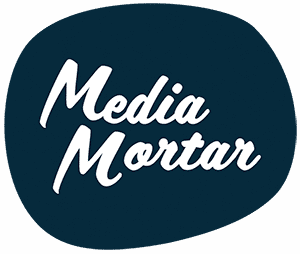
It’s as simple as this: if your business is on social media, you need a social media style guide.
Without one, you run the risk of inconsistency, mistakes and confusion on the very channels that work like a megaphone for most businesses, social media.
Adhering to a social media style guide keeps your brand’s look and feel consistent, helps onboard social media team members with ease and builds credibility online by exercising a cohesivity across all platforms.
Read on for our suggestions to make a rigorous social media style guide.
1. Social media policies
Your social media policies should sit at the top of your style guide, outlining your company’s rules for working with social media platforms.
Keep your policies short and sharp – you want this document to be read after all!
Example policy: Team members must have their access revoked from social media accounts if they leave the business for more than 14 days.
2. List your social media accounts
 Your social media style guide is a simple way to keep track of all your accounts, so creating a list will ensure they’re consistently named (e.g. @mediamortar) and saved in the one spot, easily accessible when you need them.
Your social media style guide is a simple way to keep track of all your accounts, so creating a list will ensure they’re consistently named (e.g. @mediamortar) and saved in the one spot, easily accessible when you need them.
You can also add here what type of content you do on each channel and frequency for each – e.g. Reels, IGTV, carousels or IG Guides.
Tip: Send new-starters the list of your accounts and ask them to follow each account, this will keep them up to date, and it will also give you more exposure!
3. Approval process
Unfortunately, social media mistakes are inevitable, but putting an approval process in place will ensure errors get picked up before they’re sitting on the little-internet.
Include in your social media style guide how your posts will be checked (pro tip: scheduling your content will help this!) and approved and who will review the work when the reviewer is on leave.
Tip: If a review process is unattainable, think about a checklist that can be ticked off before something is posted.
4. Tone of voice and audience
 There’s nothing worse than a social media channel where every post reads differently – it’s the equivalent of listening to someone talk in a noisy room. Who said that?
There’s nothing worse than a social media channel where every post reads differently – it’s the equivalent of listening to someone talk in a noisy room. Who said that?
By clearly outlining your target audience, you can determine the tone of voice you’ll carry throughout your brands’ channels.
Tip: Choose 10 adjectives that describe your brand image and tone – then list them under this section of your style guide (e.g., casual, modern, fun, soothing).
5. Frequently used terminology, industry specific language, and deal-breakers
Create a list of appropriate slang, frequently-used terminology, and industry specific language – but also create a list for your brand’s ‘deal-breakers’, inappropriate words and phrases.
If you want your team to avoid certain cliches (‘there’s something for everyone’, ‘for all tastes and budgets’, ‘this hidden gem’), make sure they’re listed here too.
Tip: Consider whether dad jokes and terrible puns are ok for your channels- or whether it’s more appropriate for your brand to stick to the facts and avoid colloquialism all together?
6. Preferred dictionary, grammar, spelling, and punctuation
You wouldn’t read two chapters of a book and expect a different style of writing or grammar on every page, and same goes for social media posts.
Do you use serial (aka Oxford) commas? How many exclamation marks are too many? Will you use the UK or English dictionary to reference?
In this section of your social media style guide you’ll also want to spell out how you write out numbers, date, and time conventions.
Tip: If you have a grammar style guide for printed works, you can use this when creating your social media style guide. However, do keep in mind, social media is more casual, so some of your pre-existing rules for copywriting might not carry over to social media.
7. Emoji use – yay or nay
Does it make sense for your brand to be more relaxed and cheekier with emoji usage or would you prefer to err on the side of serious and ditch them altogether?
Either way, you should highlight your emoji and if it’s a *thumbs up emoji* to their use, add 5-10 emojis that you will consistently use as a brand.
Tip: Make sure you’ve downloaded an emoji keyboard for your desktop to add them without fuss.
8. Create a hashtag and tag bank
It’s worth keeping a hashtag bank for each type of post you create to make sure they’re in line with your content pillars.
If you create campaign hashtags (that said, we recommend you build consideration for your branded hashtags first), be clear about where and when you’ll incorporate them.
While you’re at it, write down a list of compulsory third party accounts you tag to extend the reach of your posts – whether it’s suppliers listed, photographers, magazines or content aggregators.
Tip: Don’t just copy what your competitors are doing with their hashtags on social media, do the research and figure out what works best for your company, and avoid joining the clone club with other brands in your industry.
9. User Generated Content (UGC) rules and guidelines
 Does your company have a process for getting permissions to use UGC?
Does your company have a process for getting permissions to use UGC?
If you do, outline this in your social media style guide to make sure people aren’t reposting content without going through the correct procedures.
You’ll also need to determine how you’ll credit the user, as you’ll want the format to be the same each post.
Example: You might decide to credit users with a camera emoji before tagging their account, or simply spell out the word.
10. Post format and sharing guidelines
Since all platforms have different character limits and post layouts, in your social media style guide you’ll want to outline how your post formats change for channel e.g. Instagram, Facebook, and Twitter.
Regardless of platform, social media copy should generally be kept short, but whether you’ll include a link, CTA, or location pin on all posts, needs to be determined in this section of your social media style guide.
Tip: Consider whether it’s appropriate for your brand to share from other pages and accounts. Or if you should avoid competitors work all together.
11. Call to actions (CTAs)
CTAs are important not only for engagement on posts, but also giving other website links like articles, blogs, or content on other platforms more traffic.
Your social media style guide should clarify if calls to action are required in every post. If they are, determine if the CTA will lead only to your assets (e.g. website) or other timely and relevant pieces (e.g. a news article).
Tip: Links are great for engagement so you might create a rule that every post must contain a branded CTA that encourages people to click a link. This is especially important if you want to drive people to your brand’s website.
12. Design and aesthetic guidelines
 If your business already has a design team, you’ll be able to transfer the brand colours, fonts for graphics, logos, watermarks, and trademarks to your social media content.
If your business already has a design team, you’ll be able to transfer the brand colours, fonts for graphics, logos, watermarks, and trademarks to your social media content.
In this section of your social media style guide you want to get clear on how things look too – do you do black and white images only? Or do you have a rule that a tile must be every second image posted on Instagram?
Tip: Style rules should also be applied to other external editing apps and platforms like photoshop and Canva.
13. Watermarks and trademarks
If you’re putting your content out there and want it to be exclusively yours forever, consider including a watermark rule in your social media style guide.
Be sure to outline clearly how, when and where you’ll use your watermark.
Example: The brand’s watermark is to be placed on the top right-hand corner of every image and video posted to social media.
14. Community management
Whether you like it or not, you’re likely to have someone not like what you’re talking about online – and how you respond to the complaint or customer review is even more important than the complaint itself.
It’s important to treat any conversations your team members have with audiences online as a statement from the company – as their response could be screenshot and reposted, for better or worse.
Outlining a clear community messaging system is crucial for crisis management. You can decide to make a rule to ask for the user’s phone number to take the conversation offline, or you can develop a social key message document for your team that provides responses for typical/anticipated questions.
Tip: As well as specifying when a conversation needs to be moved to a private channel or phone call, outline when/if it’s ever appropriate to hide or delete comments.
Add any extra helpful info for your brand
It’s important to keep in mind, not all the above will be relevant for your business, and you might think of other things you’d like to add into your social media style guide.
Make a dot point list of any extra notes, tips, or tricks relevant to your brand and industry – because there are no hard and fast rules when writing a style guide.
Happy social media style guide writing!

By Gemma Donahoe
Social media moves quickly, and so does Gemma. She’s got a strong eye for viral content and the ability to create compelling, tailored content for a wide variety of target audiences.

Recent Comments